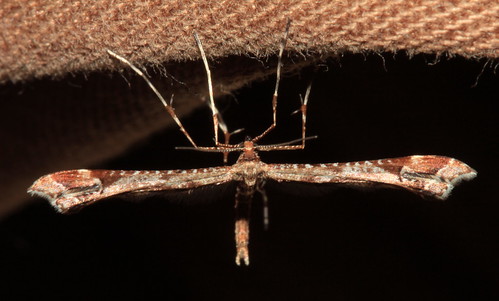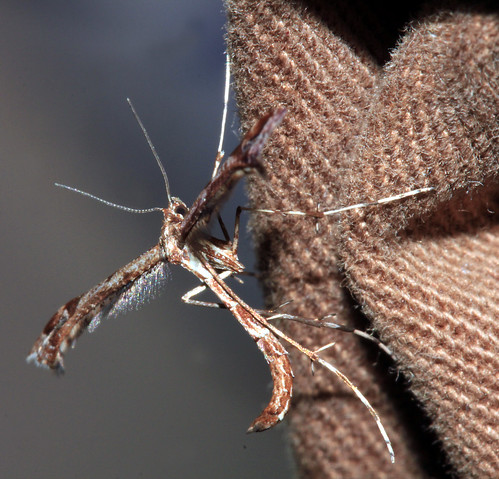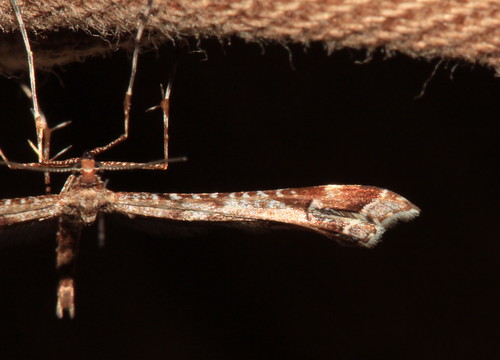1497 Amblyptilia acanthadactyla
Wingspan 17-23 mm.
Description Well distributed over much of Britain and Ireland, and, since the 1990s, has become much more frequent, including in gardens.
Like its relative, A. punctidactyla, the hindwing has two patches of black scales on its dorsum, which protrude when the rest of the hindwing is covered by the forewing. Amblyptilia acanthadactyla may be distinguished by its warm reddish brown colour from the greyish brown of A. punctidactyla.
Life Cycle There are two generations, with moths on the wing in July and again from September onwards, flying after hibernation until May. The adults are attracted to light.
The larvae feed in June and in August on the flowers and young leaves of a large range of plants, including restharrow (Ononisspp.), Hedge woundwort (Stachys sylvatica), cranesbills and cultivated geraniums (Geranium spp.), goosefoots (Chenopodiumspp.), heathers (Calluna and Erica spp.), and mints (Menthaspp.) On the continent, it has also been reported on Salvia, Teucrium scorodonia, Lavandula, Euphrasia, Carlina, Vaccinium, Calamintha and Nepeta. Several other plume species feed on some of these plants, so caution should be exercised when identifying the larvae.
National Distribution Please Allow Time to Load
.
VC 63 Distribution Please Allow Time to Load




No comments :
Post a Comment